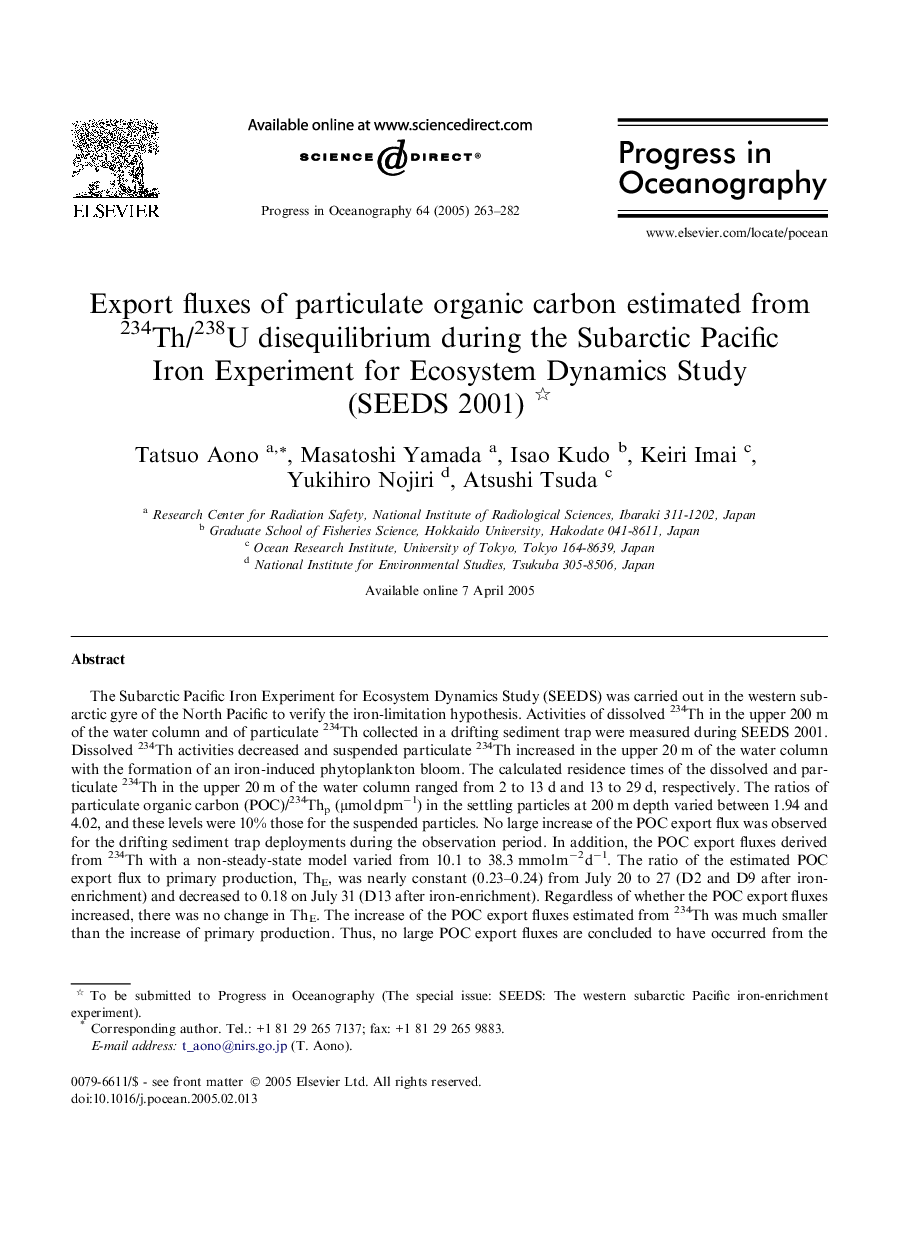| Article ID | Journal | Published Year | Pages | File Type |
|---|---|---|---|---|
| 9485115 | Progress in Oceanography | 2005 | 20 Pages |
Abstract
The Subarctic Pacific Iron Experiment for Ecosystem Dynamics Study (SEEDS) was carried out in the western subarctic gyre of the North Pacific to verify the iron-limitation hypothesis. Activities of dissolved 234Th in the upper 200 m of the water column and of particulate 234Th collected in a drifting sediment trap were measured during SEEDS 2001. Dissolved 234Th activities decreased and suspended particulate 234Th increased in the upper 20 m of the water column with the formation of an iron-induced phytoplankton bloom. The calculated residence times of the dissolved and particulate 234Th in the upper 20 m of the water column ranged from 2 to 13 d and 13 to 29 d, respectively. The ratios of particulate organic carbon (POC)/234Thp (μmol dpmâ1) in the settling particles at 200 m depth varied between 1.94 and 4.02, and these levels were 10% those for the suspended particles. No large increase of the POC export flux was observed for the drifting sediment trap deployments during the observation period. In addition, the POC export fluxes derived from 234Th with a non-steady-state model varied from 10.1 to 38.3 mmol mâ2 dâ1. The ratio of the estimated POC export flux to primary production, ThE, was nearly constant (0.23-0.24) from July 20 to 27 (D2 and D9 after iron-enrichment) and decreased to 0.18 on July 31 (D13 after iron-enrichment). Regardless of whether the POC export fluxes increased, there was no change in ThE. The increase of the POC export fluxes estimated from 234Th was much smaller than the increase of primary production. Thus, no large POC export fluxes are concluded to have occurred from the iron-enrichment patch, though the removal flux of 234Th in settling particles increased with particulate biogenic silica fluxes as the phytoplankton bloom progressed.
Keywords
Related Topics
Physical Sciences and Engineering
Earth and Planetary Sciences
Geology
Authors
Tatsuo Aono, Masatoshi Yamada, Isao Kudo, Keiri Imai, Yukihiro Nojiri, Atsushi Tsuda,
